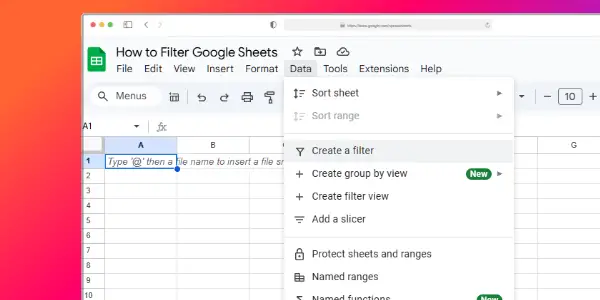Have you ever wondered what program management is and how it differs from other project management approaches? Program management is a specialized field that focuses on the successful implementation of multiple projects or initiatives that are linked together to achieve a common goal. But what exactly does it involve?
A program in program management is a set of coordinated activities that are managed as one unit to achieve an organizational goal or purpose. It involves the design, execution, and evaluation of a set of related projects that are aligned with an organization’s strategic objectives.
Program management ensures the successful completion of programs by applying established procedures and principles from project and change management.
A program helps to ensure that resources are allocated effectively and efficiently, so that the organization can optimize delivery of its desired outcomes. The program manager oversees all activities of the program and is responsible for managing progress, budget, staffing, risks, and other key variables related to the program’s success.
Introduction to Program Management
Program Management is a critical component of any successful organization. It involves a structured approach to managing a project or program, with the objective of achieving desired business outcomes. It is the process of developing and implementing a set of processes and activities in order to control, manage and monitor projects and programs.
Program Management is a broad field that encompasses a variety of different techniques and processes. In this article, we will explore some of the basics of program management, from the planning phase all the way through to the successful delivery of the program:
- Planning
- Organizing
- Controlling
- Monitoring
- Evaluating
Definition of Program Management
Program Management can be defined as the lifecycle process of managing multiple related projects to obtain desired program outcomes, benefits and objectives within the allotted budget and timeframe. With its focus on strategic alignment, Program Management looks at the entirety of a set of projects and their inter-dependencies to ensure that change initiatives are effectively implemented.
It is a holistic approach to project management in which each task is connected to a larger company goal. Program management includes processes such as budgeting, scheduling, tracking, reporting along with risk analysis, resource allocation, project integration and communications. The main purpose is to ensure that a program’s strategic goals are achieved successfully while all associated projects progress through the correct stages in an efficient and cost-effective way.
In essence, Program Management facilitates continuous improvement across organizations by allocating resources wisely and ensuring that progress towards objectives remains steady throughout each project’s cycle. By visualizing how each project’s outcomes will contribute to the success of the program and wider organizational goals, managers are able to prioritize activities and create plans with greater clarity. This ultimately leads to improved decision-making while simultaneously providing stakeholders with up-to-date insight into an organization’s performance over time.
Benefits of Program Management
Program Management enables organizations to achieve more with their resources more efficiently, yielding great financial and operational outcomes, while maintaining agility and the ability to quickly adapt. It helps companies set priorities, standardize processes and reduce costs, while also ensuring better alignment between Initiatives and Long-term Strategy.
The primary benefit of Program Management is that it helps coordinate activities across many different departments within an organization, as well as external stakeholders if desired. This can result in greater communication between teams that would otherwise not have been connected. By having a single point of contact for everyone involved – the Program Manager – these activities can be monitored on an ongoing basis and the scope of any project or initiative can be easily adjusted in real time should any changes arise.
Additionally, it provides an overarching framework to ensure alignment between initiatives and long-term strategic goals. Program Management ensures that resources are utilized most effectively, while optimizing project performance by removing distractions like unnecessary bureaucracy or complex reporting processes. Furthermore, it enables maximum control over program management budget as well as finances across initiatives by providing updates on milestones and giving instant feedback on the program’s progress. Finally, since Program Management is based on data-driven decisions rather than gut feeling or intuition – it enhances the overall efficiency of organizations operations by giving stakeholders crucial insights into key performance measures without wasting anyone’s time with irrelevant information.
Program Management Process
Program management is a way to effectively manage a large and complex project to ensure it is completed on time, within budget, and meets the overall goals of the project. It is a multi-tiered process that involves understanding a program’s objectives, developing a plan to achieve those objectives, and implementing that plan.
Let’s take a closer look at the program management process and how it works:
Program Identification and Initiation
Program Identification and Initiation is the first step in starting and managing any program. During this process, the business need and justification to initiate a program is documented. The possible solution direction is also identified during this stage.
When initiating a program, the overall objectives, expected outcomes, and resource requirements must be defined. A steering committee composed of key stakeholders must also be formed, alongside an executive sponsor for the program who will champion it throughout its duration. Furthermore, initial agreement on budget, timeline and quality requirements should be addressed in alignment with any existing standards or regulations.
An initial scoping document should be created that outlines the business case for why this program is being initiated and a detailed analysis of risks and opportunities across all stakeholder groups should also be performed. This document will set expectations for reaching desired objectives of cost savings/growth revenues/productivity enhancements which are associated with successful execution of a completed Program Management Process.
Program Planning
Program planning is the foundational activity that organizes program activities and helps to guide their execution. It is the process of assessing financial, time, personnel and other resources which are necessary for achieving program goals. During the planning phase, program stakeholders create a comprehensive plan that provides direction to all involved and outlines what should be accomplished over the life cycle of the program.
A successful plan involves accurately estimating resources needed and budgeting funds appropriately over a period of time. During this process, stakeholders define an executable strategy that rarely changes. Program planning also focuses on testing assumptions regarding objectives, approaches and resources so that any changes can more easily be made during later stages of execution. Furthermore, priority activities are determined based on risk-adjusted costs so work can begin without delay during the implementation phase.
Systematic approaches and structured processes must be in place for assessing no-value added risk factors associated with plans so objectives can be met without disruption or further delays as well as facilitate communication between team members across all areas of implementation tasks. Overall, Program Planning should ensure that all decisions are traceable from beginning to end to ensure agreement with customers needs is being made throughout each stage of a programs life span, thereby improving organizational effectiveness while satisfying core requirements when it comes to delivering programs successfully.
Program Execution
The program execution phase is the main section of the program life cycle and focuses on delivering project objectives successfully. During this phase, all projects within the program are managed and controlled to ensure that they are executed efficiently, effectively, and according to established timelines.
The main focus of this phase is to implement the plans generated during the planning process by completing tasks or activities in such a way that all project objectives are achieved. It’s during this period when the project manager delegates tasks to team members, tracks progress, assesses results and takes corrective action where necessary. This may involve changes in budgets or scheduling. The program manager must also ensure that any risks related to these processes are identified and mitigated early on.
In order to ensure successful project completions within a given time frame an important aspect of this phase entails frequent communication between parties involved in the project such as stakeholders, sponsors, suppliers and customers. Regular meetings should be held with all stakeholders making sure each party’s expectations are being met appropriately. At its conclusion, the last step of this process involves assessing whether all objectives have been achieved in order for final closure of program activities can take place.
Program Monitoring and Controlling
Program monitoring and controlling is an important part of program management. This process allows the program manager to track, measure, and monitor all aspects of the program in order to make sure it is meeting the desired objectives and goals. The program manager monitors progress through reports and reviews on a regular basis. They also identify obstacles or risks that could affect the program’s final results and adjust timelines, plans, or budgets accordingly.
The most common activities that fall under this process include the following:
- Conducting progress reviews in order to attain up-to-date information on project performance;
- Assessing potential risks associated with each element of the project;
- Analyzing data concerning trends within projects;
- Developing strategies for problem solving when necessary;
- Monitoring resource utilization in order to maximize productivity and minimize costs;
- Assessing changes relative to scope, cost, time, quality and risk factors;
- Validating performance information against appropriate quality standards;
- Tracking overall performance of programs relative to cost/schedule objectives; and
- Identifying areas for improvement as well as corrective measures.
Program Closure
Program closure is the last phase of a program management process. It marks the closure of the program and its activities and is when all deliverables are completed, accepted and transferred to operations/maintenance authorities. During program closure, it is important to review, evaluate and summarize the entire program experience including successes, failures, lessons learned and best practices; this will provide valuable insight for future programs and projects.
When managing program closure activities, it’s important that all stakeholders are informed of the completion of the process since this affects policies and procedures both within an organization as well as externally when dealing with suppliers or customers. During this phase all stakeholders along with project teams should conduct a thorough assessment in order to create a final report summarizing key findings as well as recommendations for improvement going forward. This can also include an analysis on how resources were allocated during the course of program management.
The Closure Phase should also include formal recognition of individuals or organisations who were instrumental in supporting successful outcome delivery; acknowledging their efforts not only serves their purpose but also helps build team morale. After project completion it’s essential that all documentation pertaining to activities is archived accurately – such information may be requested by outside stakeholders at any point in time so must be stored correctly throughout the project lifecycle besides during the Closure Phase itself.
Program Management Tools
Program management tools are software or systems that help organizations better manage their projects and programs. These tools provide tools and techniques to facilitate project and program planning, scheduling, resource management, tracking and reporting, issue resolution, and more. They also provide a platform for collaboration and communication, and often involve widgets, templates, and other usability features.
In this article, we will discuss the different types of program management tools and their benefits:
Project Management Software
Project management software (PMS) is a type of tool utilized to plan, budget and control the progress of projects. PMS is used extensively by project managers, teams, departments and organizations to monitor project resources, tasks and deadlines. It can be used in virtually any field where tangible results need to be accomplished within a time frame and with predetermined resources.
There are many types of PMS available, ranging from simple task tracking systems to complex cloud-based portfolio management applications. Each may have different features and capabilities depending on the type of project management being done. For example, for enterprise-scale projects that involve hundreds or thousands of users across multiple locations, specialized enterprise project management software may be needed to support such activities. At the same time, for a small team working on a single project within one location, basic task tracking tools should suffice.
Features among PMS systems vary widely but may include features such as:
- Real-time visual tracking of workloads
- Data conversion utilities
- Resource utilization functions
- Billing capabilities
- Workflow organization tools
- Task assignment capabilities
- Collaboration amenities
- Status reports
- Access verification options
- Alerts/notifications
- Compliance support solutions
- and more.
Some larger project management solutions will provide even further insights into resource allocation or cost analysis capabilities if needed. By leveraging these tools appropriately, gains in efficiency can help drive success in completing projects faster than ever before while also helping with budgeting processes.
Agile Project Management Software
Agile project management software is a type of project management tool designed to help teams build software and manage projects using Agile practices. Agile is an iterative and incremental method of planning, tracking, managing, and delivering software projects. This approach focuses on customer collaboration and self-organizing teams that enable teams to be highly efficient while releasing the right features in the right way at the right time.
Some popular agile project management tools include:
- CA Agile Central (formerly Rally)
- JIRA Software
- ScrumWorks Pro
- Atera Projects
- Trello
- Azure DevOps (formerly Visual Studio Team Services)
- Pivotal Tracker
- Redmine
- Targetprocess
All of these tools offer a mix of features that can help teams work smarter with key Agile techniques such as sprint planning and review meetings.
Risk Management Software
Risk management is an essential component of program management and requires specialized software tools and systems to ensure that risks are effectively tracked and addressed. A risk management system should be tailored to the needs of the specific project and should provide features such as allowing users to define risk zones, set levels of severity, assign tasks for individual risks, control budgets and resources allocated to different types of risks, accept or reject potential risks prior to tasks being carried out and report performance against these risks.
Most risk management software solutions come with a range of easy-to-use templates that enable organizations to actively manage key areas within their program. By having a functional system in place, organizations can more easily identify challenges posed by their programs and take appropriate actions before they escalate into serious issues.
Popular software solutions in this area include:
- IBM Rational Portfolio Manager
- Microsoft Project Server
- Planview Enterprise PMO Edition
- SAP Portfolio & Project Management Solution
- Oracle Primavera Risk Analysis
- Primedesk Risk Analysis & Monitoring Tool
Program Management Best Practices
Program management is the effective use of methods, processes, and tools in order to plan and manage all aspects of a project. It includes the coordination of activities and resources, such as staffing and budgeting, to ensure that the project is completed on time and within budget.
In order to ensure the success of a program, it is important to have a clear understanding of the best practices associated with program management. In this section, we will discuss the different program management best practices:
Establish Clear Objectives
When embarking on a new endeavor, effective program management involves establishing clear objectives to guide the implementation process. Objectives should be measurable and tailored to the organization’s broader goals and priorities.
To set realistic objectives, it is beneficial to first analyze organizational data, customer feedback, competitor positioning and market trends. Objectives should also align with established industry standards and regulations.
Once objectives are in place, they should be communicated regularly across all levels of stakeholders, including internal teams and external suppliers. This helps ensure that everyone is working towards the same goals from program initiation through to completion. Additionally, regular reviews of progress against established goals can help increase accountability across stakeholders by enabling timely identification of any potential barriers or roadblocks for swift resolution.
Develop a Detailed Plan
Program management is an umbrella term that encompasses the planning, organizing, leading and coordinating of resources to achieve an organization’s desired outcomes. Establishing a detailed plan for achieving program objectives is a key element of program management. The plan should define what activities will be undertaken, when and by whom, as well as any dependencies that exist between different tasks or teams.
To ensure successful program implementation, a detailed timeline should also be developed to ensure accountability and track progress. This should include specific target dates for task completion, as well as milestones along the way indicating various stages of the project lifecycle being met. Clear communication and frequent updates are crucial for smooth implementation; managers should be sure to provide regular status updates with stakeholders regarding key performance indicators such as budget variances or customer successes. Additionally, each team member should receive clear role descriptions and objectives that align with organizational goals.
Monitor Progress Regularly
To ensure successful program delivery, it is vital that an organization has regular monitoring of progress to identify any potential problems early on. Monitoring progress regularly allows for proactive decisions to be taken in order to handle any issues that may arise within the program. It enables performance comparisons against baseline results and can provide helpful insights into the overall effectiveness of management strategies.
The monitoring of progress should be done through implementing systematic checkpoints that are defined with respect to time, cost, scope and quality. Program performance at key milestones should be measured using appropriate tools and techniques according as Project Management Institute (PMI) standards. This helps evaluate progress against the contractual obligations, particularly in terms of planned vs. actual results in terms of effort and resources expended. A comparison between actual costs incurred against those originally forecasted will also help assess if there have been any overruns on budget or timeline as a result of lags or changes in scope or resources committed towards the program deliverables.
Regular check-ins between the sponsors, stakeholders and project teams help solicit feedback from all involved parties about the successes and issues encountered during each phase of the program delivery process making it easier for corrective actions to be taken quickly and efficiently. Stakeholder risk analysis further complements this process by identifying areas for improvement and highlighting possible risks throughout the development life cycle, thereby ensuring that all areas are closely monitored throughout program delivery as per best practices advocated by leading certification bodies such PMI® and Six Sigma®.
Manage Risks
Managing risks in program management requires the identification, assessment and control of threats to achieving project goals. Risk management activities should be conducted for each phase of the project – during planning, execution and closure – with continual monitoring of changing circumstances that may present new opportunities or risks.
Risk identification involves an assessment of factors that can have an impact on program performance such as political, economic or social dynamics, technology changes and resource availability. Assessing this information helps the program team create a realistic set of objectives, constraints and assumptions for developing the solutions and timetables associated with successful program completion.
Once identified, risks must be assigned a priority level so that resources are allocated appropriately to mitigate them. Every precaution should also be taken to ensure that any changes in risk levels are reported up or down the project chain to allow necessary adjustments in timeframes or other elements.
Program managers should also take steps to ensure proper communication between all team members throughout risk identification, analysis and implementation because an incomplete understanding can lead to unexpected delays or problems down the line. Additionally, reports concerning risk statuses should be documented by both the program manager and other users involved in mitigation activities. This helps everyone remember their specific roles within the overall solutions process for when questions arise about progress made on due dates or deliverables achieved along various stages within a given project timeline.
Finally, programs should include regular reviews to assess which activities yield successful outcomes and which need improvement – both practical factors as well as individual actor performance metrics should be considered here:
- Practical factors
- Individual actor performance metrics
Communicate Effectively
Communication is one of the most important aspects of program management. Program managers should ensure that stakeholders are aware of the program’s objectives and goals, as well as its progress relative to them. They should also be sure to communicate any updates in a timely manner. In addition, they should be attentive to feedback and use it to modify project plans or approach as needed.
Update staff on key decisions and progress using regular meetings, emails, newsletters, intranet postings, publications or reports. Make meetings clear in content and purpose when scheduling them – supplying an agenda beforehand takes the guesswork out of preparation time before meeting start time. Additionally, identify roles for participants by selecting meeting leaders/facilitators who can help move conversations along and encourage participation among team members who may not be prone to voicing opinions with confidence.
Make sure all participants know what topics will be discussed during meetings beforehand so that careful research can take place into those matters if necessary. Finally, allow follow-up conversations on particular matters that may arise during meetings for further clarification or action items’ completion if needed.
By communicating openly amongst stakeholders from the beginning of projects throughout their completion phases, constructive criticism can be voiced with an understanding that everyone has the same goal: project success!
Conclusion
The conclusion of program management is that it is a collaborative effort to bring projects to a successful completion. A program comprises related projects and activities that are directed toward the same strategic objectives, purpose, and performance goals. Successful integration of these related elements begins with outlining the program’s objectives and implementing clear plans for each project and activity involved.
Program management also includes:
- Identifying risks factors and effectively managing them.
- Monitoring progress.
- Providing leadership throughout the program’s life cycle.
- Staying within budgets and other financial constraints.
- Developing an approach to communication between stakeholders.
- Utilizing resources efficiently and effectively in a timely manner.
- Fulfilling quality requirements for deliverables produced by the program.
- Producing stakeholder reports as needed throughout the lifetime of the program.
- Meeting deadlines successfully to reach desired outcomes.
These efforts create outcomes which contribute towards organizational success as well as individual growth within a company.
How does political influence impact the effectiveness of program management?
The presence of politics in program management can significantly impact its effectiveness. Political influence can lead to conflicts of interest, favoritism, and decision-making based on personal agendas rather than the best interests of the program. This can create instability, hinder progress, and ultimately undermine the success of the management.
Frequently Asked Questions
Q: What is a program in program management?
A: A program in program management is an umbrella term used to describe a group of related projects and activities that all work together to achieve a common strategic objective, such as increasing market share or developing new products. The program manager is responsible for overseeing the program and ensuring that all the individual projects and activities achieve their goals.
Q: What are the benefits of program management?
A: Program management provides an overarching framework for managing multiple related projects, ensuring that all goals are aligned with the organization’s strategic objectives. It can also be used to identify and mitigate risks, optimize resources, and ensure that projects are completed on time and on budget.
Q: What skills are needed to be a successful program manager?
A: To be successful in program management, you must have strong communication and organizational skills, as well as the ability to think strategically and manage resources. It also requires an understanding of budgeting, risk management, and change management, as well as the ability to work with stakeholders across the organization.





